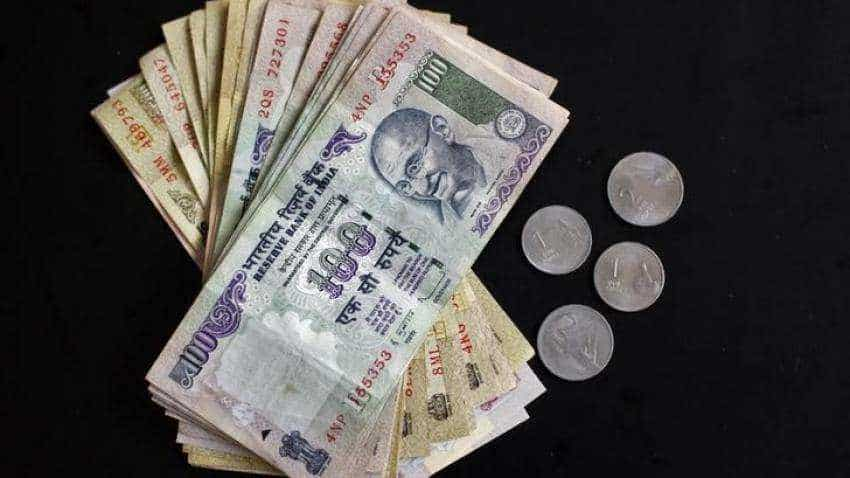India's Current Account Deficit to widen to 2.5% of GDP in FY19: Moody's, experts
"India's current account deficit is likely to widen to 2.5 per cent in FY 2018-19, up from 1.5 per cent in fiscal 2017 due to higher oil prices and strong non-oil import demand as domestic demand accelerates," he said. "Net oil imports accounted for 2.6 per cent of GDP in FY 2017-18 and will increase further in fiscal 2019."

India's current account deficit (CAD) will widen to 2.5 per cent of the GDP in the current fiscal due to higher oil prices that has been accentuated by rupee depreciation, Moody's and other experts have said.
Rupee last week dropped to a record low of 70.32 to a US dollar as political turmoil in Turkey and concerns about China's economic health continued to support safe-haven assets and weighed on emerging market currencies.
Joy Rankothge, Vice President - Senior Analyst, Moody's Investors Service said while the weaker rupee will benefit exports at the margins, it is unlikely to reverse the trade deficit, which hit a five year high of USD 18.02 billion in July.
"India's current account deficit is likely to widen to 2.5 per cent in FY 2018-19, up from 1.5 per cent in fiscal 2017 due to higher oil prices and strong non-oil import demand as domestic demand accelerates," he said. "Net oil imports accounted for 2.6 per cent of GDP in FY 2017-18 and will increase further in fiscal 2019."
Rajiv Biswas, APAC Chief Economist, IHS Markit, said the significant depreciation of the rupee against the US dollar since the beginning of 2018 reflects a number of factors.
"A key driver has been gradual US Fed monetary policy tightening, which has resulted in USD appreciation against many other currencies globally. However, the rupee weakness also reflects India's widening current account deficit as higher world oil prices have pushed up oil import costs.
"A further negative for the INR is that a number of economic crises in large emerging markets including Argentina, Venezuela and Turkey, have made global investors more cautious about emerging markets currencies and equities," he said.
Sunil Sinha, Principal Economist, India Ratings and Research, said the rupee depreciation will have both positive and negative impact on the economy.
"On the negative side it will increase the oil import bill leading to higher current account deficit. Also, costly oil import would seep into the economy via higher inflation, make infra and other projects, which have a large import content, expensive and will even make critical imported defence items more expensive," Sinha said.
On the positive side, he said as an overvalued rupee was hurting export competitiveness, it will improve export competitiveness of Indian goods and services. Also, it will improve the top line/bottom line of the companies especially export oriented IT/IT services companies.
"Net-net it may inflict some pain in the short run, but would lead to gain in the medium to long term," he said.
Watch Zee Business Video here:
Rankothge said Moody's expect the ongoing cyclical recovery in growth to continue with GDP growth averaging around 7.4 per cent this year and next driven by the underlying growth momentum in the economy, pre-election spending and a pickup in rural demand to largely offset the impacts of a weaker rupee and rising oil prices.
"From a sovereign risk perspective, low foreign currency debt and long average debt maturity minimize exposures to rising rates and currency weakness," he said.
Sinha said trade position may worsen in the short term because of the oil/other items import bill rising immediately, while the benefit of export competitiveness benefiting the economy largely in the medium to long term.
"CAD to come under pressure this fiscal. India Ratings expects CAD to touch 2.6 per cent of GDP in FY19," he said.
Biswas said rupee depreciation is not occurring in isolation, as many other emerging markets currencies have also shown significant depreciation against the USD this year, including the Chinese yuan, Indonesian rupiah and Malaysian ringgit.
"The Turkish lira has crashed by 40 per cent against the USD since the beginning of 2018, as that nation is engulfed by a financial crisis. Therefore, India's relative competitiveness against many emerging markets competitors has not improved that much despite the rupee depreciation against the USD," he said.
Biswas said a further widening of the CAD is expected in 2018-19 to around 2.4 per cent of GDP, due to a further increase in the oil import bill and the impact of rupee depreciation on import costs.
Get Latest Business News, Stock Market Updates and Videos; Check your tax outgo through Income Tax Calculator and save money through our Personal Finance coverage. Check Business Breaking News Live on Zee Business Twitter and Facebook. Subscribe on YouTube.
RECOMMENDED STORIES

Senior Citizen Latest FD Rates: Know what major banks like SBI, PNB, Canara Bank, HDFC Bank, ICICI Bank are providing on fixed deposits

Gratuity Calculator: Rs 38,000 as last-drawn basic salary, 5 years and 5 months of service; what will be gratuity amount?

Top 5 Small Cap Mutual Funds with best SIP returns in 1 year: See how Rs 25,000 monthly investment has grown in each scheme

Top 7 SBI Mutual Funds With Best SIP Returns in 1 Year: Rs 25,000 monthly SIP investment in No.1 fund has jumped to Rs 3,58,404
03:38 PM IST












 Currency market update: Rupee settles 4 paise lower at 83.96 against US dollar
Currency market update: Rupee settles 4 paise lower at 83.96 against US dollar Rupee rises to 83.49 against US dollar in early trade
Rupee rises to 83.49 against US dollar in early trade Rupee slips to end at 83.52 vs dollar
Rupee slips to end at 83.52 vs dollar  Rupee slips to end at 83.52 vs dollar on Wednesday
Rupee slips to end at 83.52 vs dollar on Wednesday Currency Market News: Rupee opens on a flat note at 83.50 vs dollar
Currency Market News: Rupee opens on a flat note at 83.50 vs dollar